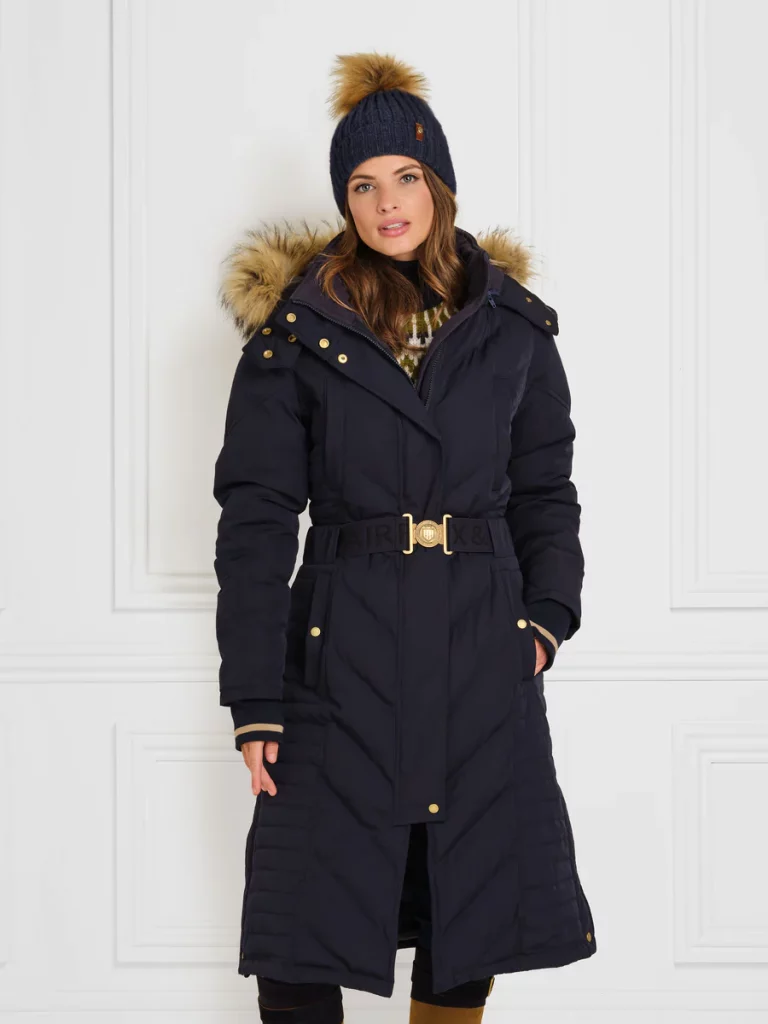
As the temperature has dropped this week, a clothing expert at Fairfax & Favour has shared tips for finding the perfect winter coat. Assistant Press Manager, Charlie Cooke, has put together her advice below:
- You buy a coat without checking the insulation
Different coats will include different types of insulation, or in some cases none at all. It’s imperative to have a good understanding of the quality of your coat to know what types of weather it has been designed to withstand. Good insulation materials may include feather down, wool or synthetic down. Opt for high quality insulation to ensure your coat can keep you warm when temperatures drop. Choosing a coat with a faux-fur trim around the hood may provide added warmth for more comfortable wear.
- You buy a coat for rain without checking its water resistance capabilities
There is a difference between waterproof and water resistant coats, for everyday use in typical circumstances water resistant coats can serve you requirements. Water resistant coats will withstand so much rain, whilst waterproof offer full protection from the elements. Water resistant coats can offer more breathability to give you more versatile wear all-year-round to allow for additional room when layering. It’s good to weigh up what you want from a coat before making your purchase.
- You buy a coat which isn’t fully windproof
The windproof capabilities of a jacket or coat depend upon how dense the fabrics it is made of are. These thicker fabrics offer resistance to strong airflow, such as wind. Jackets may be labelled as wind-resistant or windproof, similarly to water-resistant wind-resistant jackets obstruct some but not all of the elements. Any good quality item should list whether it is windproof or wind resistant online or in the label of the item in store.
- You buy a small size or tight-fitting coat
It is always a good idea to go for a slightly bigger fitting coat so you can layer underneath for added warmth and adaptability, you can add or remove layers as weather demands. If you go for a small fit or even a perfect fit you may be making yourself vulnerable to cold, as you reduce the opportunity to wear thicker clothing underneath.
- You choose a cotton coat for cold weather
Cotton absorbs moisture, which could retain cold or rainwater to then expose this to your skin. Cotton is also known for its breathable qualities, meaning it isn’t the top material to opt for to reduce the impact of winds. Cotton is also not as effective as keeping you warm as other materials, instead look for wool or synthetic materials.
- You choose a coat that won’t give you full coverage
Short jackets may be stylish and work well for transitional weather but for more adverse conditions it is recommended to choose a long fit coat to give you full coverage.it shouldn’t be taken for granted how much difference a coat can make which gives you full leg and arm coverage from the wind and rain.
- You buy a coat which won’t cover your neck
Your neck is an area which loses some of the most body heat, due to the distance of your head from your core, so keeping this area warm is of utmost importance in extreme cold weather. Selecting a coat with a high collar, with extra padding if possible, will allow your body to retain more heat and keep you warm in the process.
Fairfax & Favor offer a high quality selection of premium coats, apparel and outerwear for men and women.